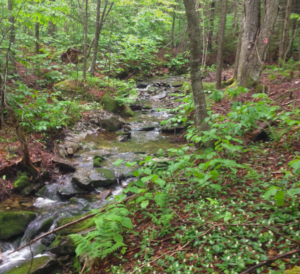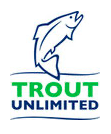 Trout in the Classroom is an environmental education program in which students raise brook trout from eggs before releasing them in a state-approved stream.
Trout in the Classroom is an environmental education program in which students raise brook trout from eggs before releasing them in a state-approved stream.HOW IT WORKS
Teachers tailor the program to fit their curricular needs. While TIC requires a focus on science, the program has marvelous interdisciplinary applications in numerous other subjects, including mathematics, social studies, language arts, technology, and fine arts. Thus, TIC can be as narrowly focused or as broadly applied as the teacher and her students want to make it.
With respect to science study, the essential aspects of the program are learning about early trout development, monitoring tank water chemistry, and maintaining water quality. But many programs also provide students opportunities to:
*learn about trout anatomy, habitat, life cycle, and food;
*study streams and how they work;
*collect and classify stream insects; and
*analyze stream water quality.
The optimal grade level is 3rd through 6th. TIC works best when it is taught “across the curriculum,” that is, when teachers use TIC to foster learning in virtually all subject areas, certainly in science, mathematics, language arts, social studies, and fine art.
WHAT DOES IT TAKE?
- a classroom tank (55-gallon is recommended), chiller, filter, aerator, water test kits, and bacterial additives (together these cost approximately $1,200)
- one or more committed teachers (given the expense and the learning that it takes to initiate the program, we don’t encourage schools to apply for TIC unless they intend to offer the program repeatedly)
- a supportive principal, including, after the first year, willing to allocate an annual supplies budget of approximately $100
- LEARNING! New teachers must attend a free daylong training workshop on an early November Saturday. Teachers are also expected to read/study a 90-page TIC Manual. This Web site and its frequent blog posts are intended to be further sources of support. As challenges arise–and they will!–teachers will need to do additional research, consult with others, and engage in problem-solving with colleagues and volunteers.
TIME TABLE
- spring before the year of initiation, investigate what’s involved, decide whether you want to do the program, look into possible funding sources, begin curriculum planning
- if at all possible, funds should also be secured by the end of September
- early November, TIC workshop
- mid-November, set up tank
- early January, get eggs
- late winter/early spring, raise trout; learn about water chemistry; learn about trout anatomy, life cycle, habitat, food, threats, etc.; learn about the streams and watersheds trout inhabit
- mid to late May, Release Day! (usually includes fieldwork activities)
- early June, clean everything and pack it away for next year
THE STUDENT’S ROLE
Ideally, TIC students have a large role in—indeed, take responsibility for—tank maintenance. Experience has shown that, once trained, students as young as third graders can accurately, reliably, and conscientiously perform all water chemistry tests as well as necessary water changes. Adult supervision is, of course, desirable.
TROUT UNLIMITED’S ROLE
Nationally, Trout Unlimited provides extensive technical and curricular resources through the TIC Web site (http://www.troutintheclassroom.org/) and an invaluable listserve for state coordinators. In Vermont, members of TU’s five chapters serve as volunteers to their respective region’s TIC programs. TU’s lead facilitator for TIC in Vermont organizes a workshop each fall for teachers and volunteers and is also available for ongoing support and consultation.
THE ROLE OF VOLUNTEERS
Although some teachers prefer to “go it alone,” all programs, especially new programs, are strongly encouraged to recruit one or more community volunteers to assist with the program. These individuals can be parents, grandparents, retired educators, local sports enthusiasts, and others. While it is beneficial when volunteers are knowledgeable about trout and/or science, such knowledge is certainly not necessary.
Typically volunteers help with basic tank maintenance, participate in field trips, and collaborate with teachers in addressing water chemistry challenges. They are often willing to teach lessons on stream insects and topics such as trout anatomy, habitat, and life cycle. Some even augment the standard TIC program with fly-casting instruction or fly tying classes.

